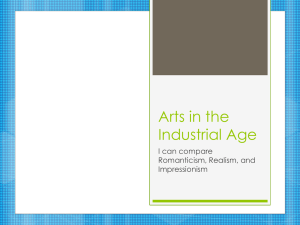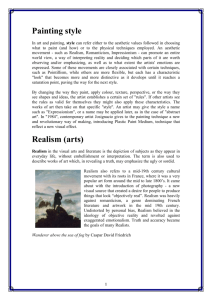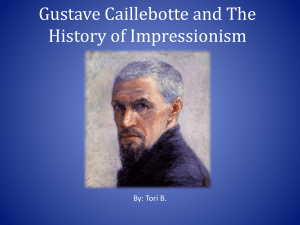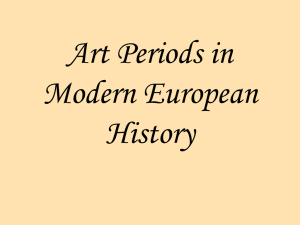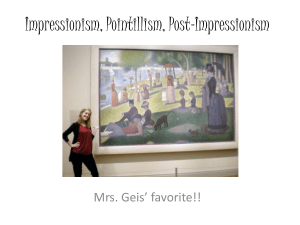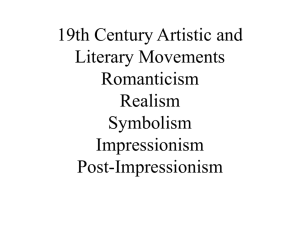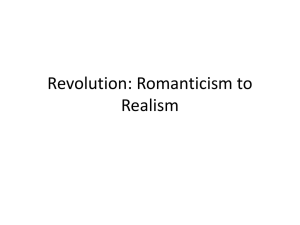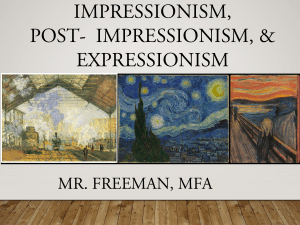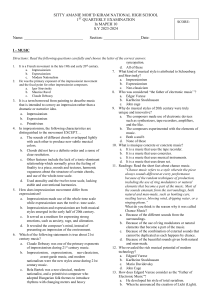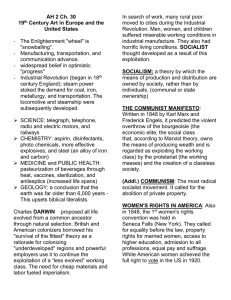Lec #10 19th Cent Art
advertisement
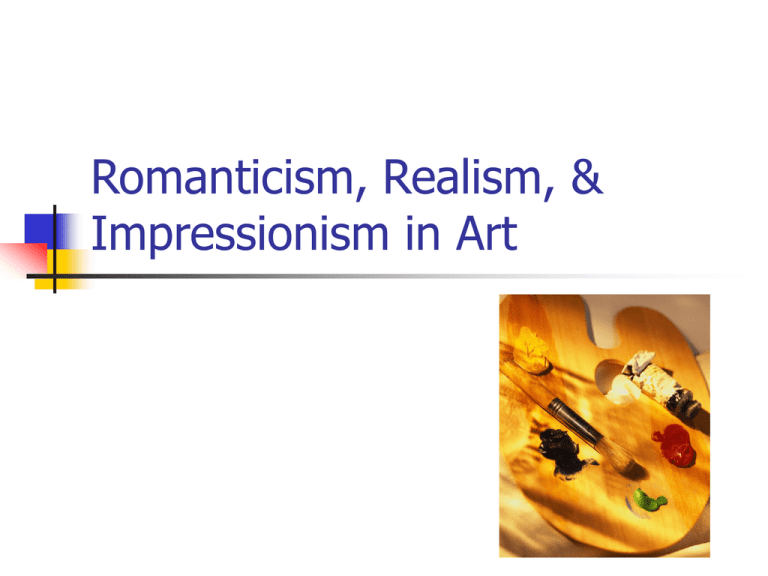
Romanticism, Realism, & Impressionism in Art Romanticism characterized by the 5 “I”s Imagination was emphasized over “reason.” This was a backlash against the rationalism characterized by the Neoclassical period. Imagination was considered necessary for creating all art. Intuition – feeling and instincts are more important than reason – value is placed on strong emotion – art tried to evoke emotion. Idealism emphasizes the spirit, the mind, or language over matter – we can make the world a better place through art. Inspiration - The Romantic artist was an “inspired creator” rather than a “technical master.” What this means is “going with the moment” or being spontaneous, rather than “getting it precise.” Individuality - Romantics celebrated the individual. Governments and movements should not sacrifice the individual but raise him/her. Realism Attempts to create a truthful and accurate depiction of the models that nature and contemporary life offer to the artist. The artificiality of both the Classicism and Romanticism in the academic art was unanimously rejected New idea was that ordinary people and everyday activities are worthy subjects for art. Artists - Realists attempted to portray the lives, appearances, problems, customs, and mores of the middle and lower classes, of the unexceptional, the ordinary, the humble, and the unadorned. Impressionism Photography changed painting immensely, when artists like Monet discovered how photography worked - the capturing of individual grains of light - they began to change the concept they had of art and painting. Also felt that trying to capture things realistically via painting was pointless since a camera could do that. Painters felt that objects are not so much things in themselves as they are agents for the absorption of color and light. Shadows are not black or gray, but tend to take on a color complementary to object. Rebelled against hard lines of neoclassicism - There are no hard lines in nature, lines don't exist in nature. Concern of the painter should be more with light and color. Tried to brighten up paintings by using primary colors to increasingly convey the illusion of sunlight through a prism. Post Impressionism A Collection of artists with very diverse, individual, styles influenced by the Impressionists in fact, Post Impressionism was a reaction to the limited impressionist view that paintings should be all about light. Post Impressionists wanted to do more. Post-Impressionists continued using vivid colors, thick application of paint, distinctive brushstrokes and real-life subject matter, but they were more inclined to emphasize geometric forms, to distort form for expressive effect, and to use unnatural or arbitrary color Each painter in the movement pursued unique, personal subject matter and, while sharing stylistic goals with the other Post-Impressionists, had a personal form of expression. For example, Cézanne abandoned the Impressionists' virtuoso depiction of evanescent light effects in order to pursue his preoccupation with the underlying structures of natural forms and the problem of unifying surface patterns with spatial depth. Both Gauguin and van Gogh rejected the indifferent objectivity of Impressionism in favor of a more personal, spiritual expression. Seurat and his followers concerned themselves with Pointillism, the systematic use of tiny dots of color.
